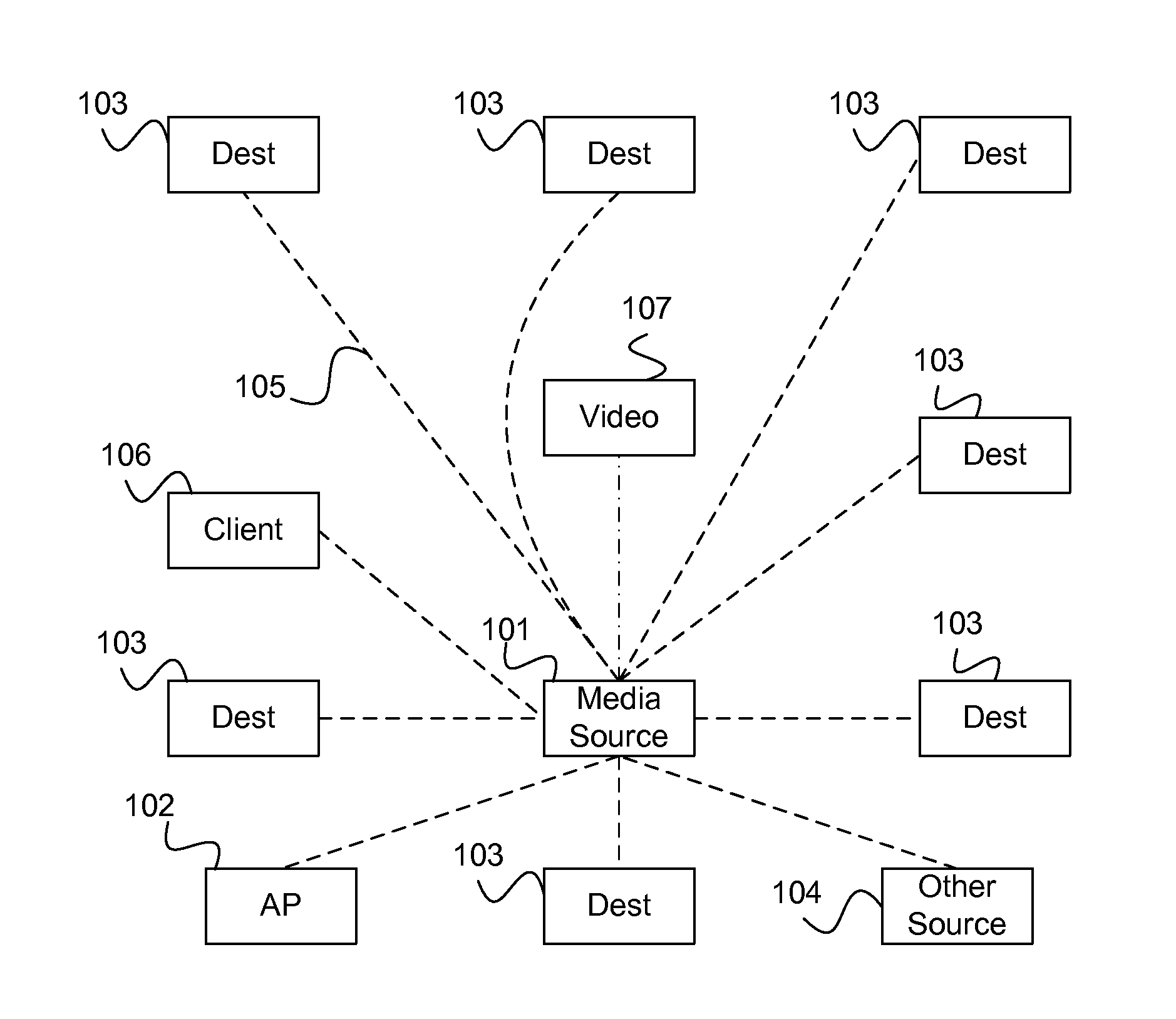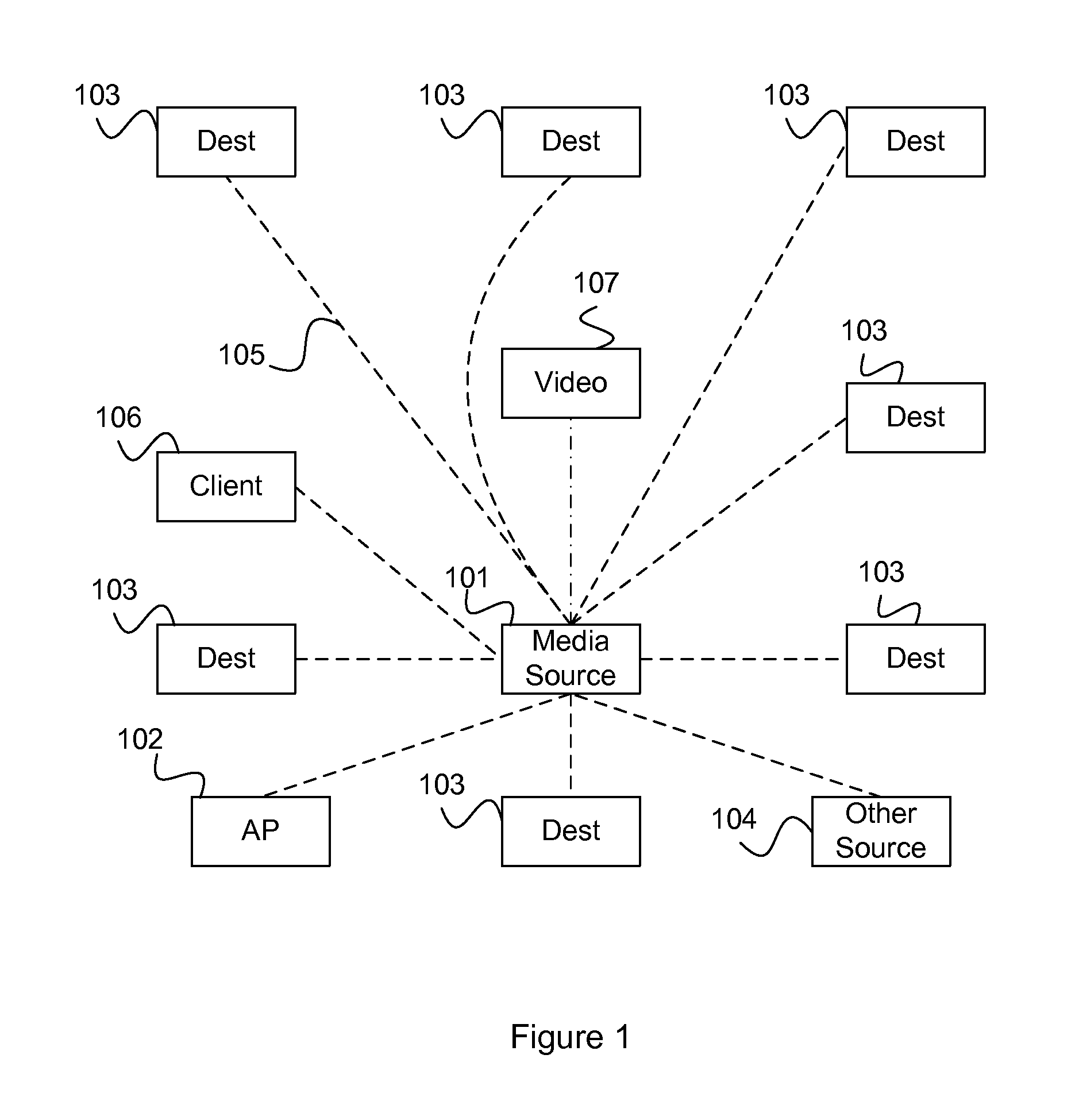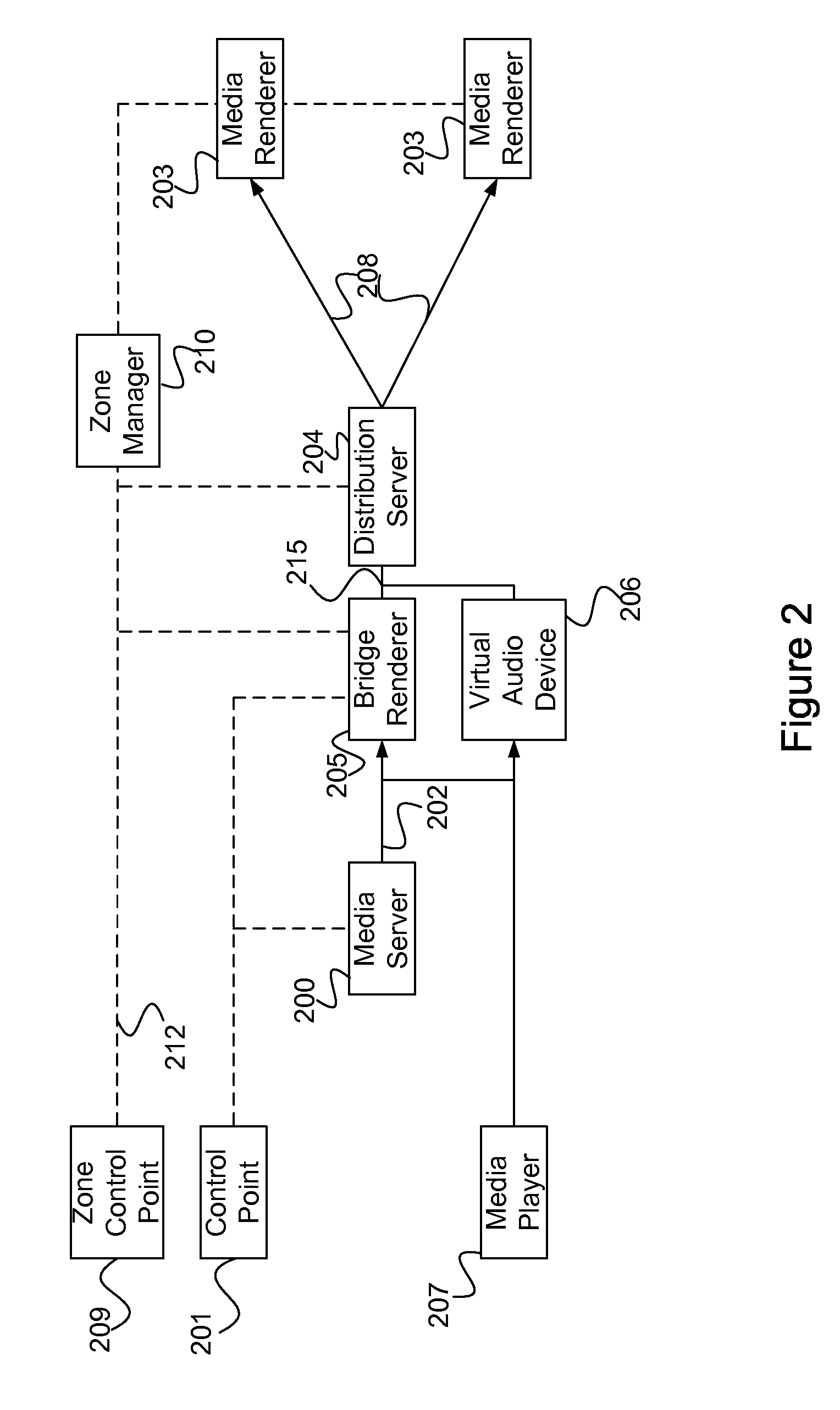Provisioning and streaming media to wireless speakers from fixed and mobile media sources and clients
a wireless speaker and fixed-mobile media technology, applied in the field of data communication, can solve the problems of complex provisioning process and minimal protocol, and achieve the effect of increasing the system speed
- Summary
- Abstract
- Description
- Claims
- Application Information
AI Technical Summary
Benefits of technology
Problems solved by technology
Method used
Image
Examples
application examples
6. Application Examples
6.1 Example 1
Follow Me Music from PDA
[0148]In this example, a family has wireless IP addressable speakers (media renderers) installed in their two cars and in their living room and bedroom. The system is a ‘Local Source to Audio Device (LSAD)’ Configuration as shown in FIG. 4.
[0149]Each of two users has a wireless PDA as a source device 101 with a media player 207, zone control point 209, virtual audio device 206 and distribution server 204 on it. This software package was downloaded automatically onto the PDA from a web site. Each PDA's zone control points 209 are configured with source identifiers 1 and 2, and configured to play in zones Car1, Car2, Living Room and Bedroom. Each of the two source devices 101 are configured with the public keys for the speakers in Car1, Car2, Living Room and Bedroom. Each zone has a zone manager 210 that has registered and authenticated with the speakers in its physical zone.
[0150]When User1 gets into Car1 with PDA1, the zone...
example 2
6.2 Example 2
Coffee Shop: Play for a Quarter
[0160]In this example, a coffee shop may be installed with wireless speakers where the customers are allowed to play music from their music cell phones for a quarter. The coffee shop has a ‘Remote Source to Bridge Renderer (RSBR)’ configuration as shown in FIG. 3, where the destination devices 103 are the wireless speakers in the shop, the source device 101 is a server computer located in and owned by the coffee shop and the customer cell phones are the client devices 106. If the customers do not have the necessary software installed on their cell phone, they may download it from the coffee shop web site.
[0161]When a customer walks in, the zone control point 209 on her cell phones discovers the zone manager for the coffee shop and gathers zone information including the music media available and the billing method and amounts. Choosing to browse the coffee shop media may require media server 200 access authorization and may include a charge...
example 3
6.3 Example 3
Media Booth: Location-Driven Playback
[0163]In this example, as the user enters a playback zone, such as a retail booth, the user's mobile device causes the wireless speakers in the retail booth to play media to the user. The media may be generic or user-specific and playback may include playback to a video display as well.
[0164]In this embodiment, the mobile device has a zone control point 209 as described above, while the booth has the wireless speakers and zone manager 210. A media server 200 is also present on the zone manager network, but may not be physically in the booth.
[0165]When the user enters the vicinity of the zone, the zone control point 209 detects the zone manager 210 and interacts with it. Entering a play zone is detected by monitoring signal strength of the communication between the zone control point 209 on the mobile device and the zone manager 210 in the booth. If the zone manager 210 detects an appropriate zone control point 209, and the zone contr...
PUM
 Login to View More
Login to View More Abstract
Description
Claims
Application Information
 Login to View More
Login to View More - R&D
- Intellectual Property
- Life Sciences
- Materials
- Tech Scout
- Unparalleled Data Quality
- Higher Quality Content
- 60% Fewer Hallucinations
Browse by: Latest US Patents, China's latest patents, Technical Efficacy Thesaurus, Application Domain, Technology Topic, Popular Technical Reports.
© 2025 PatSnap. All rights reserved.Legal|Privacy policy|Modern Slavery Act Transparency Statement|Sitemap|About US| Contact US: help@patsnap.com



